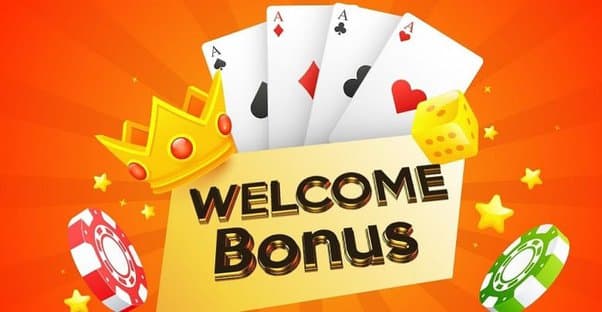If you’re thinking about selling a mortgage note, the first thing you’ll want to know is: What’s the value of my mortgage note?
The answer isn’t as simple as looking at the unpaid balance. Mortgage note buyers run the numbers through a different lens—focused on risk, return, and collateral. And while most note holders expect something close to the balance due, the actual offer depends on how the note performs under scrutiny.
Understanding what investors look for—and how they assign value—puts you in a stronger position to negotiate.
It Starts With Cash Flow

A mortgage note is only worth what it pays. Investors buy notes to collect the future stream of payments. The more predictable that stream, the more it’s worth.
Key considerations:
- Remaining balance
- Interest rate
- Monthly payment amount
- Number of payments left
These create the baseline cash flow. From there, buyers discount the note based on risk. That discount is what determines your actual offer.
Core Factors That Impact Value
1. Borrower Payment History
This is at the top of every investor’s list. A clean, on-time payment history signals low risk. Late payments or gaps in the schedule raise red flags.
- Performing notes (borrower pays on time) are valued higher.
- Sub-performing or non-performing notes get heavy discounts.
If your note has 12–24 months of consistent payments, that adds real value.
2. Interest Rate
Investors compare the note’s rate to their required yield. If the note pays 8% and the investor is targeting a 9% return, they’ll apply a discount to make the numbers work.
Lower interest notes (e.g., 3%–5%) typically sell for less because they produce less income. Higher rates (6%–9%) are more attractive and command better prices.
3. Loan-to-Value Ratio (LTV)
LTV is the ratio between the loan balance and the property’s current market value.
Example:
- Loan balance: $140,000
- Property value: $200,000
- LTV: 70%
The lower the LTV, the more equity the borrower has—and the more secure the note is for the buyer.
Notes with LTVs under 75% are generally considered strong.
4. Property Type and Location
Not all real estate is created equal. Investors prefer:
- Single-family homes in stable neighborhoods
- Owner-occupied properties
- Homes in appreciating markets
They’re cautious with:
- Vacant land
- Rural properties
- Mobile homes without land
A note tied to a condo in Los Angeles? Better than raw land outside Barstow.
Location also affects foreclosure timelines. Some states (like California) offer faster, non-judicial processes. Others require court action. That impacts perceived risk.
5. Remaining Term
Notes with shorter terms are generally worth more. Why? Less time = less risk.
A note with 5 years left is more appealing than one with 25 years, even with the same balance. But long-term notes can still be valuable—especially with strong interest rates and a solid borrower.
Some buyers prefer shorter notes. Others like longer ones for steady cash flow. Either way, the term factors into the pricing model.
The Discount Rate

This is how buyers calculate the present value of your note. They apply a discount rate (aka required yield) to the future cash flows.
It’s based on perceived risk. The higher the risk, the higher the discount rate.
Here’s how discount rates typically break down by risk level:
|
Risk Level |
Discount Rate |
Example (100 payments of $1,000) |
|---|---|---|
|
Low-risk note |
7%–9% |
~$78,000–$82,000 |
|
Moderate-risk note |
10%–12% |
~$72,000–$76,000 |
|
High-risk or non-performing |
13%–20%+ |
~$60,000–$70,000 |
In plain English: If your note pays $1,000/month for 100 months, an investor will apply a discount rate to those payments to determine what they’re worth today. That discounted present value is the basis for their offer.
That number is the basis for their offer.
Documentation Adds or Subtracts Value
Investors want clean, complete records. If your documentation is weak, expect to lose value—or delay the process.
You need:
- Signed promissory note
- Recorded deed of trust or mortgage
- Payment history (bank statements, servicing records)
- Proof of insurance and taxes
The cleaner the file, the stronger the offer.
Using a Servicer Matters
If your note is being serviced by a third party, it’s a plus. Servicers track payments, generate reports, and manage escrow accounts. That builds investor confidence and simplifies due diligence.
If you self-service, be ready to provide complete records. Partial or inconsistent documentation creates uncertainty—and that lowers value.
How Marketing Influences Note Quality (Before You Ever Sell It)
Here’s something most sellers don’t think about: the way you marketed and sold the original property affects your note’s value.
If you overinflated the price, cut corners to close, or worked with an unqualified buyer, you’ve likely created a weaker note.
On the flip side, if the property was priced right, marketed well, and sold to a buyer with solid credit and a decent down payment, you’ve built an asset investors want.
That’s why marketing matters—because it’s not just about selling the house. It’s about creating a high-quality note you can sell later.
Tips to Maximize Value
Start by requesting a recent property valuation before shopping your note. It ensures you have a current, realistic sense of the collateral’s worth—one of the key numbers investors use to assess risk.
Next, fix any missing documentation before presenting the note to buyers. Incomplete records slow down the process and invite lower offers. If your note hasn’t been in place long, consider waiting until you’ve built up at least 12 months of on-time payments.
A longer, clean payment history gives buyers more confidence and reduces perceived risk.
And finally, don’t settle for the first offer. Get multiple quotes. Different buyers have different criteria, and shopping around gives you leverage—and often, a better deal.
Common Mistakes Sellers Make
- Expecting 100% of the balance
- Ignoring the borrower’s credit risk
- Offering weak documentation
- Selling to the first buyer without comparison
The note market is nuanced. A strong offer reflects not just the numbers, but the story behind the deal.
Final Thoughts
Investors don’t just buy paper—they buy risk and return. The better your note performs on the key metrics—borrower strength, interest rate, LTV, documentation—the higher the price you’ll command.
If you’re serious about selling, look at your note like an investor would. Clean it up, price it right, and partner with buyers who understand your asset. That’s how you walk away with the most value.


















